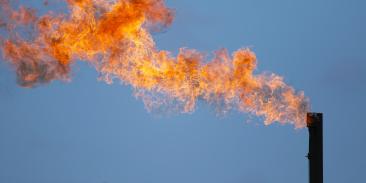Indoor Ice Rinks Pose Air Quality Problems From Resurfacing Machines
“Unfortunately, very few indoor rinks use electric resurfacers, though these machines are available. Indoor ice rinks should either purchase an electric resurfacer or use an advanced catalytic converter to prevent health concerns from high levels of carbon monoxide and nitrogen dioxide,” said EDF senior engineer Lois Epstein. “Just as it’s a bad idea to start a car in a closed garage, it’s a bad idea to use a polluting ice resurfacer in an enclosed rink.”
A survey of 332 ice rinks in nine countries reported in the October 1997 Journal of the Air and Waste Management Association (www.awma.org) showed that indoor ice rinks use resurfacers powered by propane (59%), followed by gasoline (28%), diesel (10%), and electricity (3%). US and Canadian ice resurfacers are almost entirely powered by propane (which creates high nitrogen dioxide levels) and gasoline (which emits carbon monoxide). Less than half the indoor rinks surveyed, including those in the US and Canada, use catalytic converters to reduce indoor air pollution.
This study also showed that nearly 40% of the rinks surveyed worldwide could be exceeding the World Health Organization’s 1-hour exposure guideline value for nitrogen dioxide in indoor air, with higher percentages of rinks exceeding this value in the US (55%) and Canada (46%). High nitrogen dioxide levels have been associated with respiratory problems such as severe coughs, chest pain, and pulmonary edema.
High carbon monoxide levels can cause headaches, dizziness, nausea, and impaired performance. At the levels of carbon monoxide typically found in indoor rinks, fast breathing from skating or hockey can produce less dramatic, but possibly more frequent, adverse health effects. Infrequent epidemic poisonings from very high levels of nitrogen oxide or carbon monoxide have occurred in indoor ice rinks with combustion-powered ice resurfacers.
Air quality at indoor ice rinks is affected by how an ice resurfacer is powered, whether a combustion-powered resurfacer contains a catalytic converter, the type of ventilation system and its hours of use, the use of a combustion-powered ice edger, and the frequency of resurfacing.
“Indoor ice rinks should test their air quality and report those results to the public,” said Epstein.
With more than 3 million members, Environmental Defense Fund creates transformational solutions to the most serious environmental problems. To do so, EDF links science, economics, law, and innovative private-sector partnerships to turn solutions into action. edf.org
Latest press releases
-
New Seafood Executive Order Puts American Seafood Competitiveness At Risk
April 18, 2025 -
California Must Lead on Climate Action through Cap-and-Trade Extension this Year
April 15, 2025 -
Reports: Trump Administration Plans Detrimental Cuts to NOAA Climate Research
April 11, 2025 -
Senate Bill Would Reduce Risk of Catastrophic Wildfires
April 11, 2025 -
EPA Reportedly Plans to Stop Collecting Data about Climate Pollution
April 11, 2025 -
IMO's Climate Diplomacy Sets the Course for the Shipping Sector’s Energy Transition
April 11, 2025










